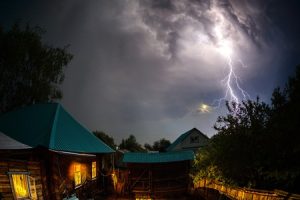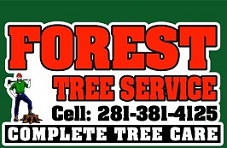
Did you know a strike of lightning can produce temperatures greater than 50,000 degrees? And one strike can reach more than five miles in length? And if you want another statistic that’ll blow your mind, how about this: a lightning strike can have an electrical charge of 100 million volts! Yikes.
Trees Are Prone to Strikes of Lightning
Since trees are typically the tallest objects in most areas, they are likely to receive lightning in a way that can truly affect them. For instance, their sap will boil, steam will be generated, and cells in the wood will explode. A tree struck by lightning is going to have strips of wood and bark blown off or at least left peeling. If only one side of a tree gets hit, the tree is likely to survive and the wound will close on its own over time. However, if the lightning strike passes through the tree trunk, with exploded wood on each side, the tree is most likely killed.
What Happens to Your Tree After a Lightning Strike
Sometimes you won’t see visible, external symptoms of a lightning strike on a tree, but there can be injuries sustained internally or even below ground. Electrical current can pass through the trunk to the roots, dissipating in the ground. So even if a tree doesn’t look damaged– to the naked eye– the roots could still be negatively affected by electricity from the strike. When roots get “fried,” you’ll notice the leaves wilting soon after, and the tree is going to die in a couple days. Sometimes the tree will live– watering it and fertilizing it can help.
How Corrective Pruning Can Help
Corrective pruning should be done if and when a lightning strike creates broken branches on a tree. Most people wait a couple of months before hiring a pruning service simply to see if the tree seems to be “doing well” after the strike… or not. Why pay money for pruning if the tree is going to die, right?
Forest Tree Service of Kingwood, Texas, is here to help if you suspect a tree in your yard has suffered from lightning strike damage. Please call 281-381-4125 for more information. You can also use email to contact Forest Tree Service; the email address is foresttreeservice@gmail.com.
